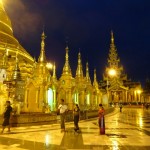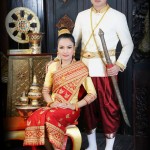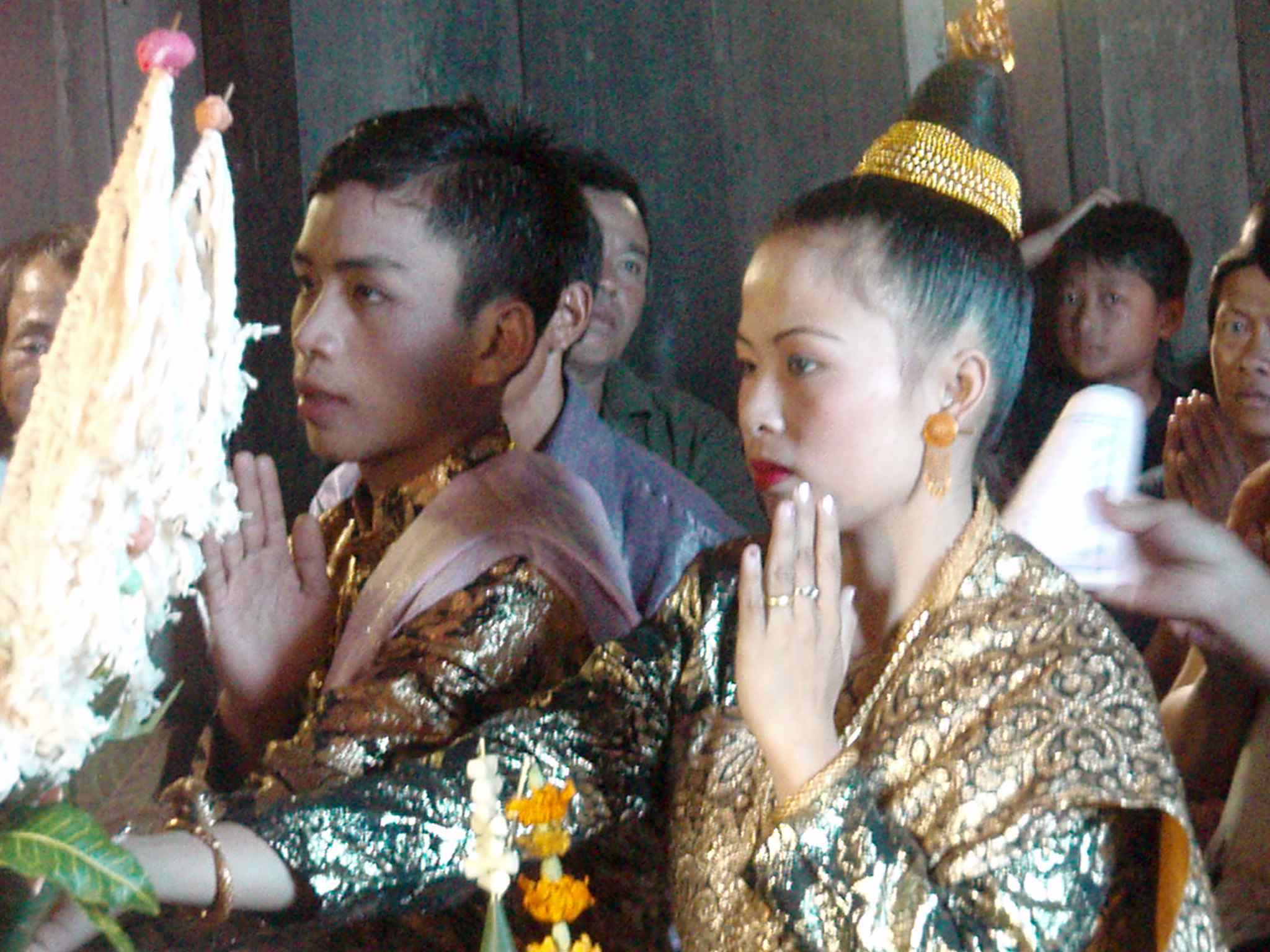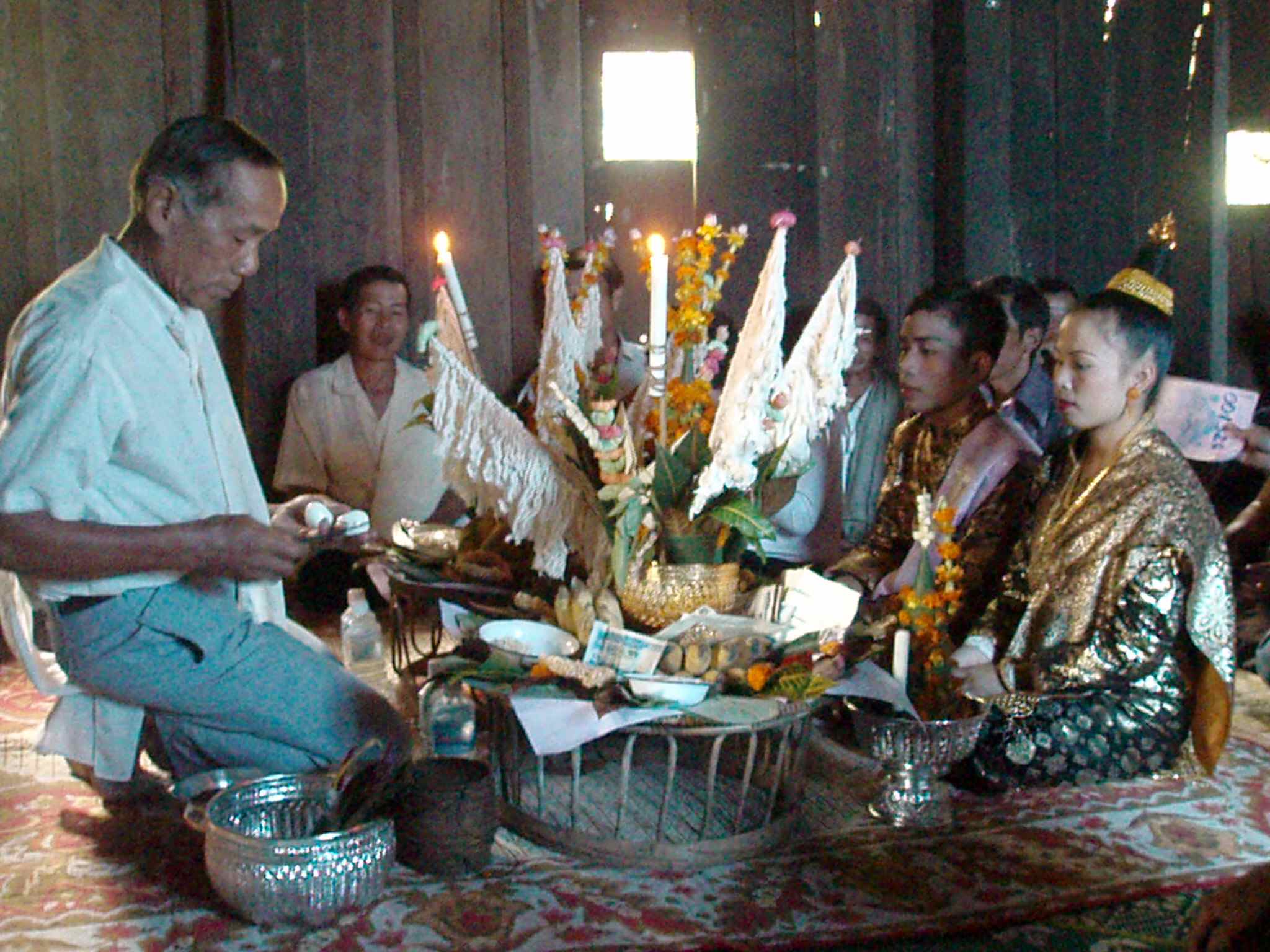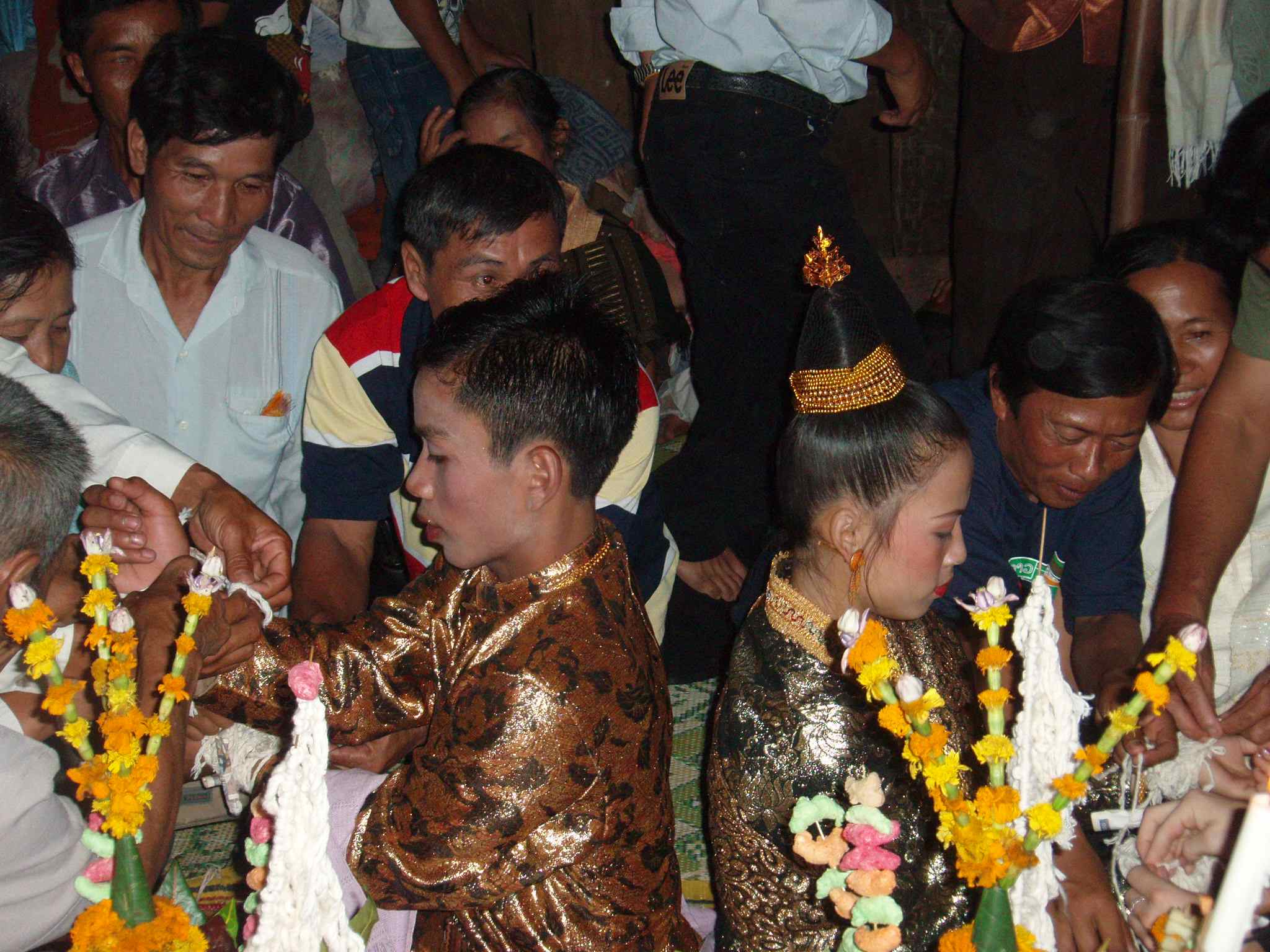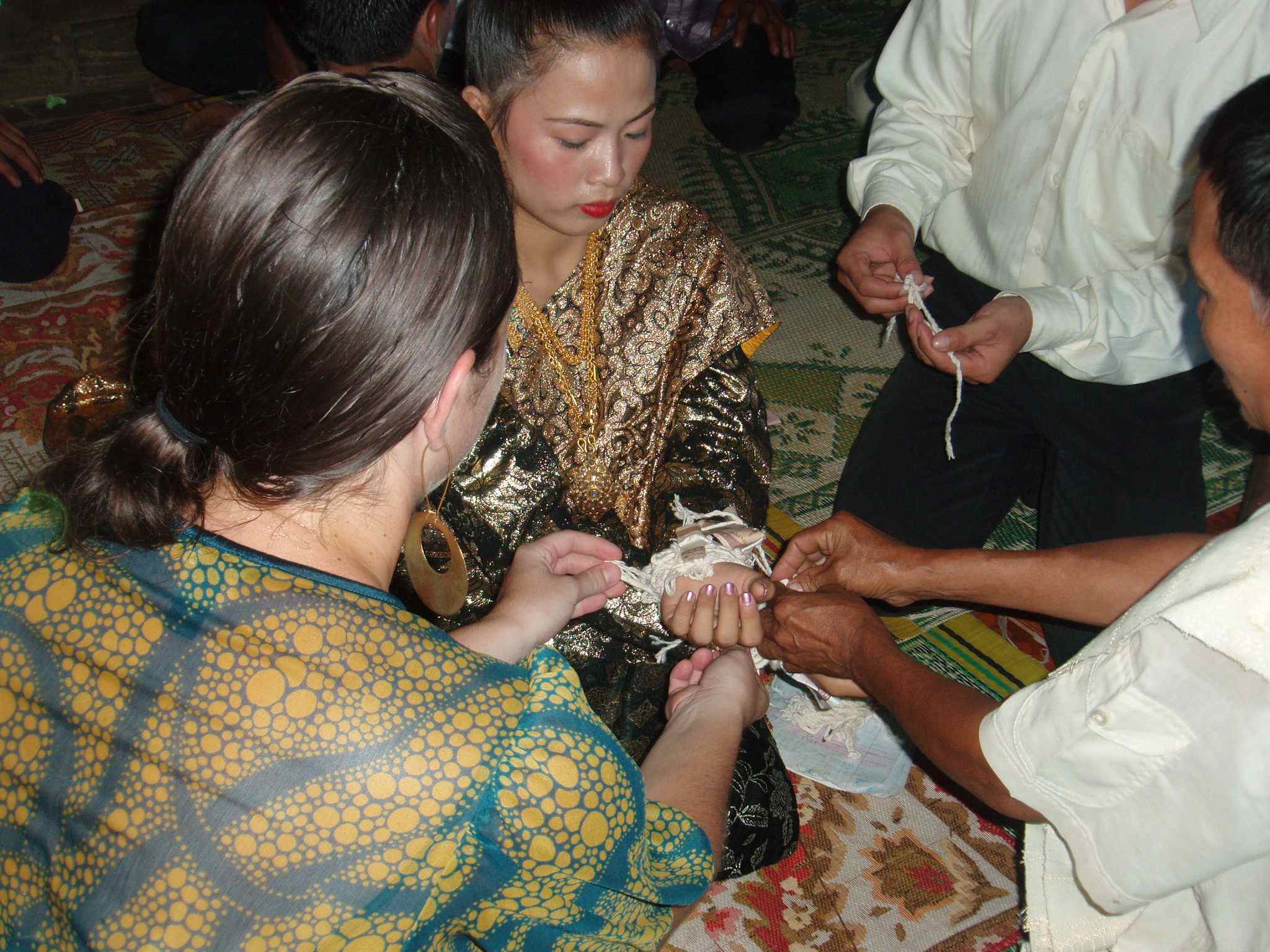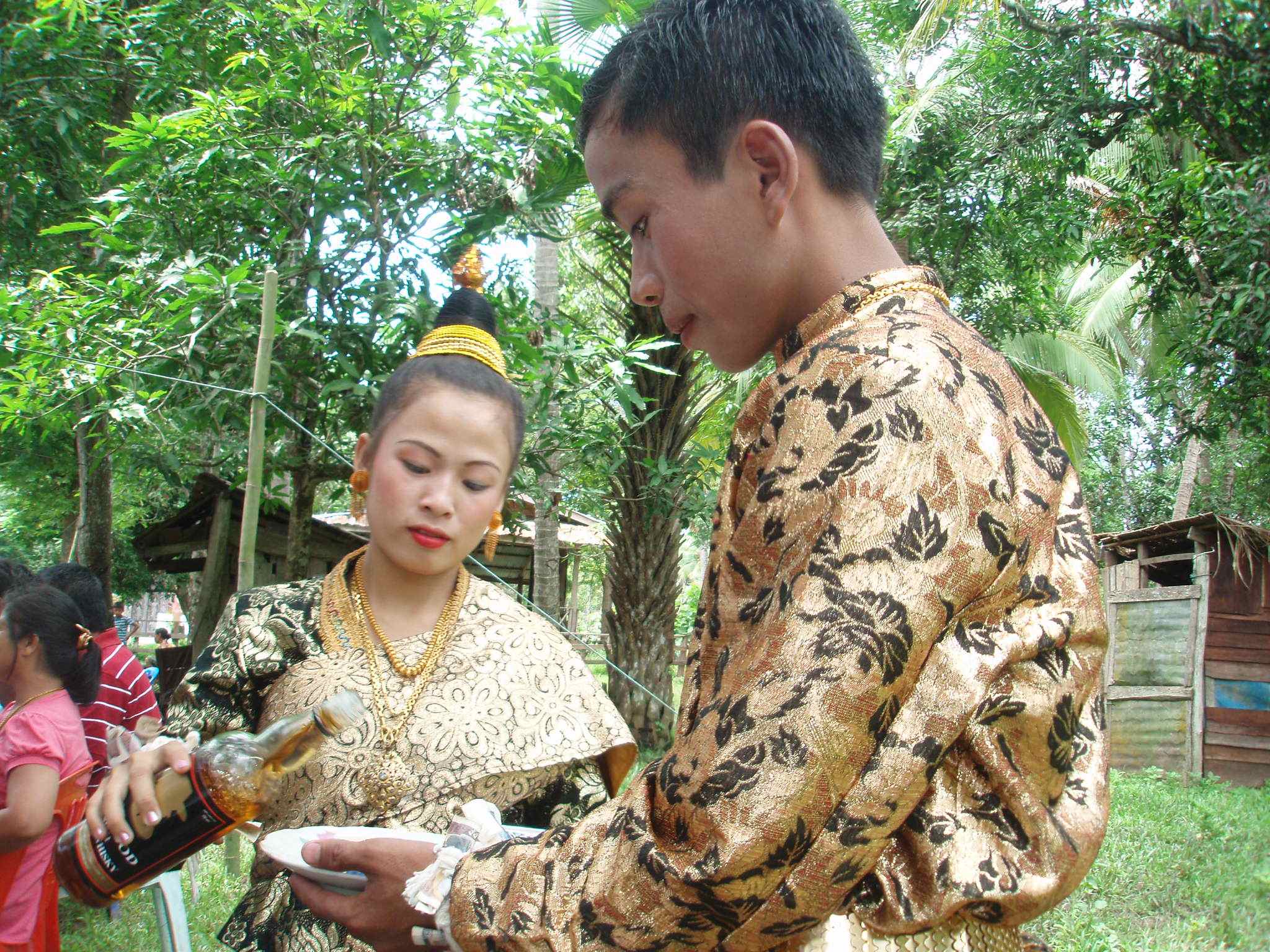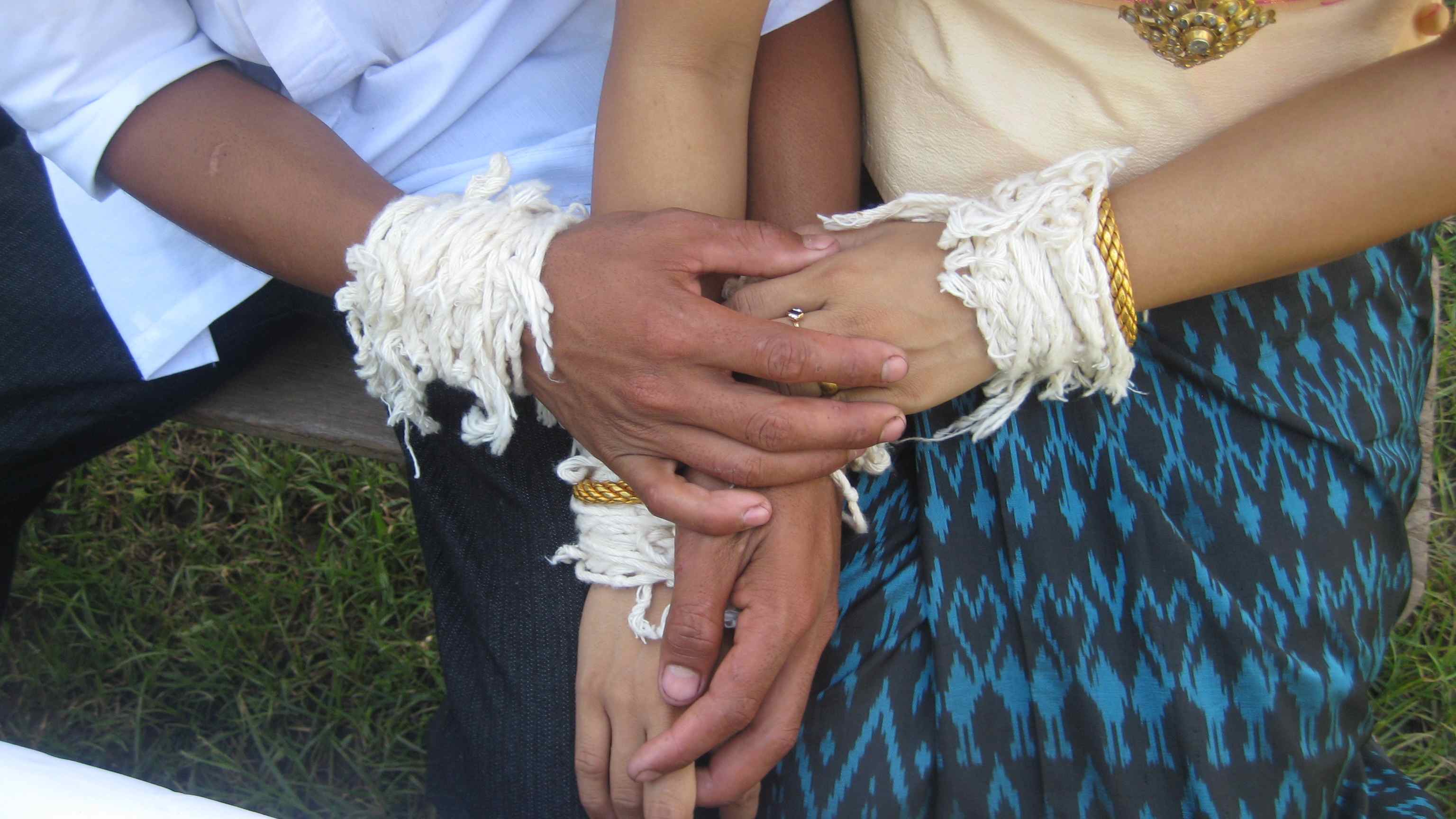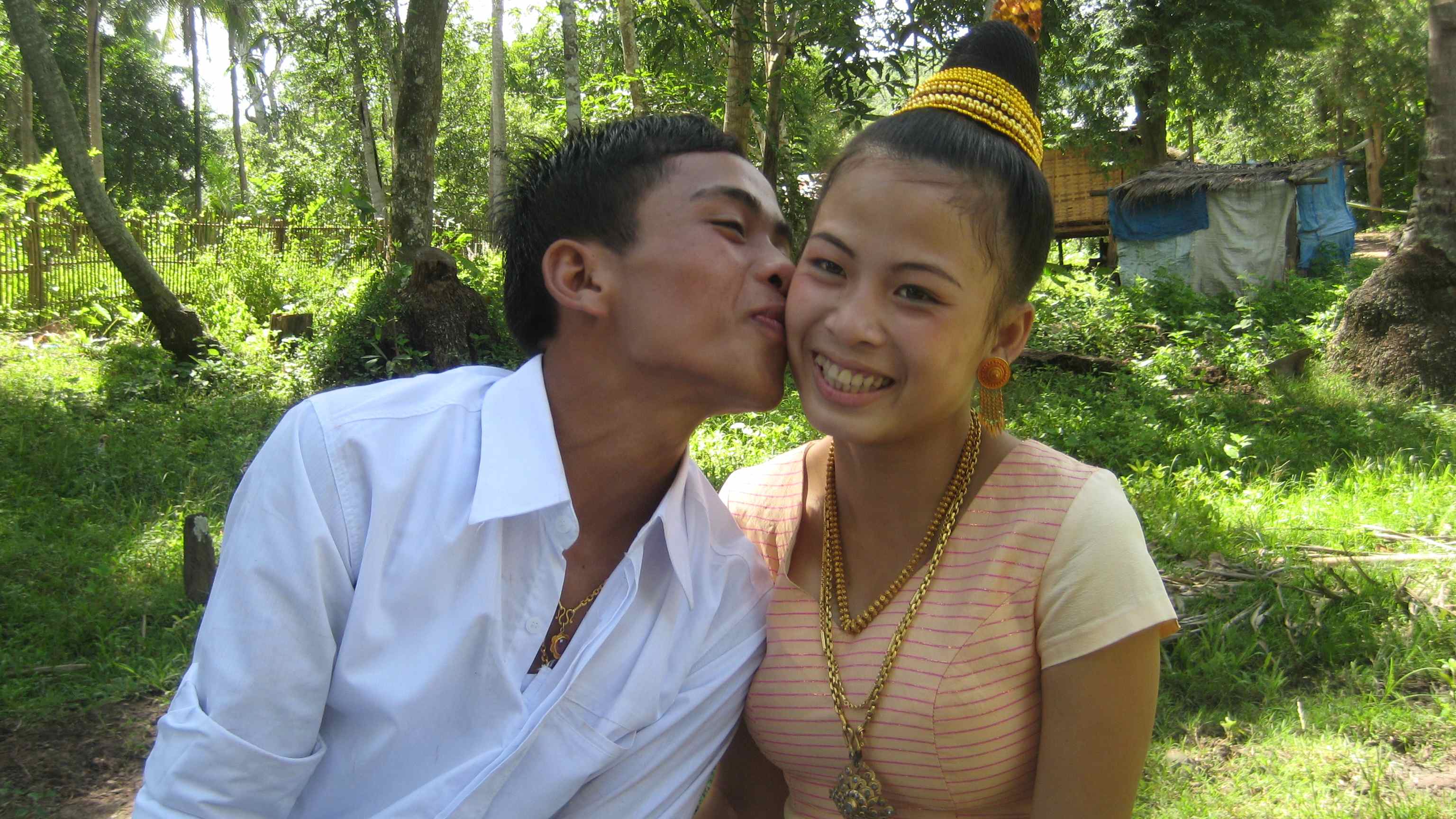Recently the Nicole, the JWOC Laos Director, and I were invited to a wedding with our coworker and friend, Phaeng. He had a cousin who was getting married and wanted to show us our first traditional Lao celebration. On our way to the wedding that morning I asked Phaeng what time the ceremony started and he told me, “9:30 or 10 or 11,” so I wasn’t really sure if we were going to be early or late or on time.
After catching a boat across the Mekong to the opposite bank, we arrived at the bride’s village, Ban Dahn. Other than the women preparing food outside and patrolling roosters, the village seemed rather empty so I thought maybe we were early. We walked around for a few minutes before we figured out that the ceremony had already started in a small hut above us. We all took off our shoes and scampered up the stairs.
The room was crowded and there was no electricity or ventilation, so everyone was wet and fanning themselves in the ceremonial sauna. We sat down on our heels on a thin bamboo mat that covered the wooden floor. After a few minutes inside I was already drenched and I empathized with Phaeng’s cousin and his bride in their thick, long-sleeved wedding gear.
Phaeng explained that usually the bride and groom rent their wedding clothes and the bride rents special jewelry for the occasion. They looked like Lao royalty in their matching black and gold outfits and when I asked about the bride’s earrings I realized why she rented them (they were almost $2000!).
We couldn’t understand anything that was being said or done, so we just sat silently and took in the scenery. The couple sat on one side of a small whicker table that held a shrine with candles, flowers, colorful puffs that resembled Fruit Loops and some sticks with string that looked like little mops. An older man sat on the opposite side of the shrine table, preparing various items and conducting the ceremony.
The ceremony was very casual, there were men sitting in the next room talking and laughing and people were discussing things in different parts of the room while the ceremony man was doing his thing. But the bride and groom sat intently, focused on the shrine before them and the man above them.
At one point they struck a familiar pose and fed each other and drank with crossed arms. Then the man conducting the ceremony did something strange with an egg and passed them various items across the table. There was no real “repeat after me” process or vows said, but there were some chants and talking done by the master of the ceremony. The ceremony wizard then asked everyone to gather around the table and touch it, chanting something while everyone tried to squeeze in.
After the table grab, the bride and groom sat back to back and lines of men formed before the groom on one side and the women formed a line next to the bride on the opposite side. People came up one by one and tied thin white strings on the bride and groom’s wrists. As each person tied the string they paid their respects and wished the couple good luck and a happy future together. This string-tying ritual is called a baa si ceremony and the Lao people do it for many reasons: a wedding, a new baby, a new home or business, if someone is moving away or going on a long trip, even after you’ve been sick or had an accident.
After the ceremony, everyone poured out of the sweathouse onto the picnic tables set up outside. The table decorations were simple: pink napkins in a holder, bottled water, plastic cups and the staple to any Lao celebration—giant bottles of Beerlao.
Once everyone was settled, the newlyweds walked from table to table carrying a silver bowl and a bottle of “True Manhood Rich Scotch Whiskey” and the gift giving began. First they gave: a shot of Lao whiskey, then the guests gave: a small donation to the silver bowl as a wedding gift. No one brings toasters or blenders; they just toss some kip into the bowl or buy a case of Beerlao for the party.
Since Nicole and I were the only ones with cameras, we became the official wedding photographers and decided that beyond our bowl donation and Beerlao case, we would put together a proper Western wedding photo album as our real gift. As hired wedding photographers, we decided we should get a couple of farang poses for their farang photo album, like a shot of their crossed ringed and stringed hands.
It was a good day. We got to go undercover as Lao family members for the day (though we weren’t very inconspicuous as the only two farang) and the people we met were lovely. The whole celebration highlighted a marvelous aspect of Lao culture: people make do with what they have and have a good time while they’re at it.



